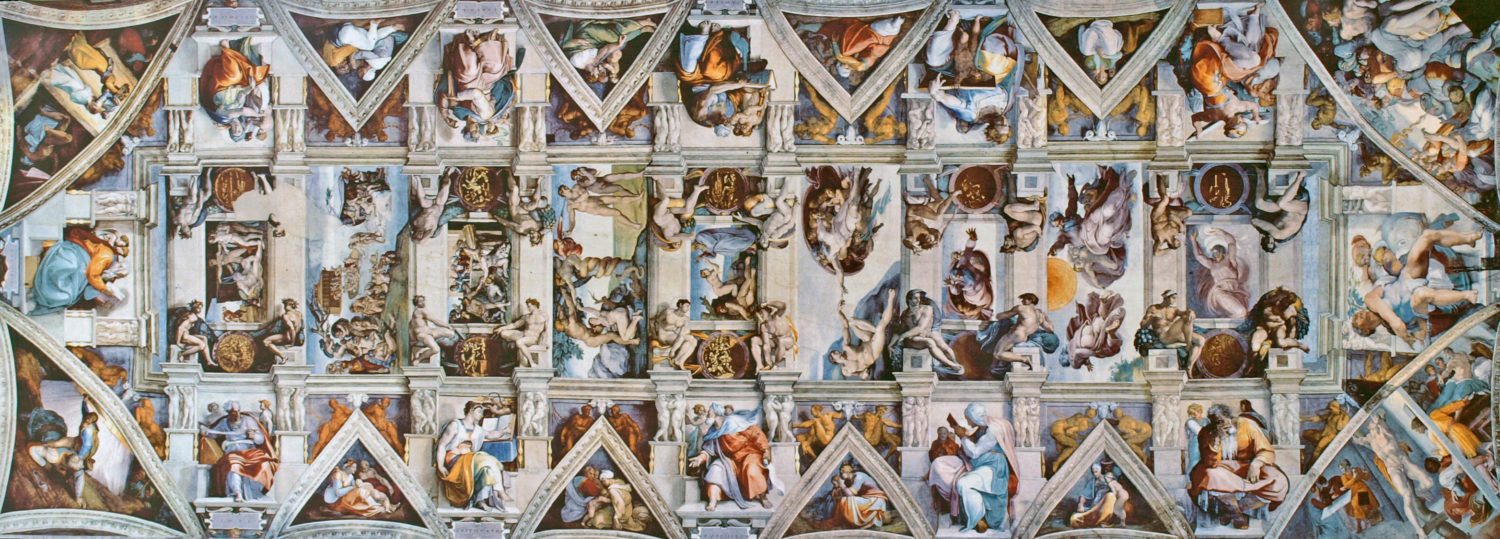
The School of Athens by Raphael, c.1510–12.500 cm X 770 cm. Vatican,Rome.
This large fresco is a masterclass in linear perspective. The Forum like architecture is bilaterally symmetrical and provides a very large number of orthogonals that converge, with rigid mathematical precision, to a point between Plato (on the left) and Aristotle (on the right) as they walk towards us. Although these two are not the largest figures in the picture our eye is drawn towards them by the linear perspective. The figure of Aristotle opens out the space towards us by pointing with a very sharply foreshortened arm.
The figures are arranged in three main planes, and thus in three different sizes, to reinforce the recession. The first plane is at the bottom of the steps, the next at the top of the steps and the third in line with Plato and Aristotle.
The effect of dimension and solidity is further enhanced by the use of form on the figures, especially on their arms. The red of the tiles in the foreground and the blue sky in the background further enhance the illusion that we are looking into a genuine space.
The light is very diffuse and comes from many directions, though principally from the right and the shadows are not very strong, thus allowing Raphael a free hand to model form.

Giacomo Doria by Titian, 1533–5.116 cm X 98 cm. Ashmolean Museum, Oxford.
The use of oil on canvas allows Titian to use a very wide range of visual effects here compared with fresco. He creates a solid, believable representation of a real person standing in a credible space without using linear perspective at all. The only slight concession towards geometry being the foreshortened right arm. Everything here is created by modelling light.
The figure is half length with his right shoulder forwards which makes the face slightly to one side. This allows it to be more subtly modelled, revealing the character and personality of the man. There is sfumato to take the sharpness away from the hair and beard. Titian uses light from several directions but mostly from the front and from the left. The composition is pyramidic, typical of the Renaissance, with the light on the face and hands reinforcing this structure.
The clothes are in monotone black, but their rich texture and folds use oil colour techniques and chiaroscuro to create believable 3D volumes. The artistic device of the marbled column, its cylindrical shape and solidity created purely by light, adds gravitas to the picture and also adds depth, bringing the figure towards us.
Titian uses the Venetian effect of scumble, which he probably invented, inthe picture to produce depth and to soften tones and to create subtlety.
The greyish pink background is neutral and flat, with no features. This has the effect of concentrating our attention on the man. There are no distractions.
